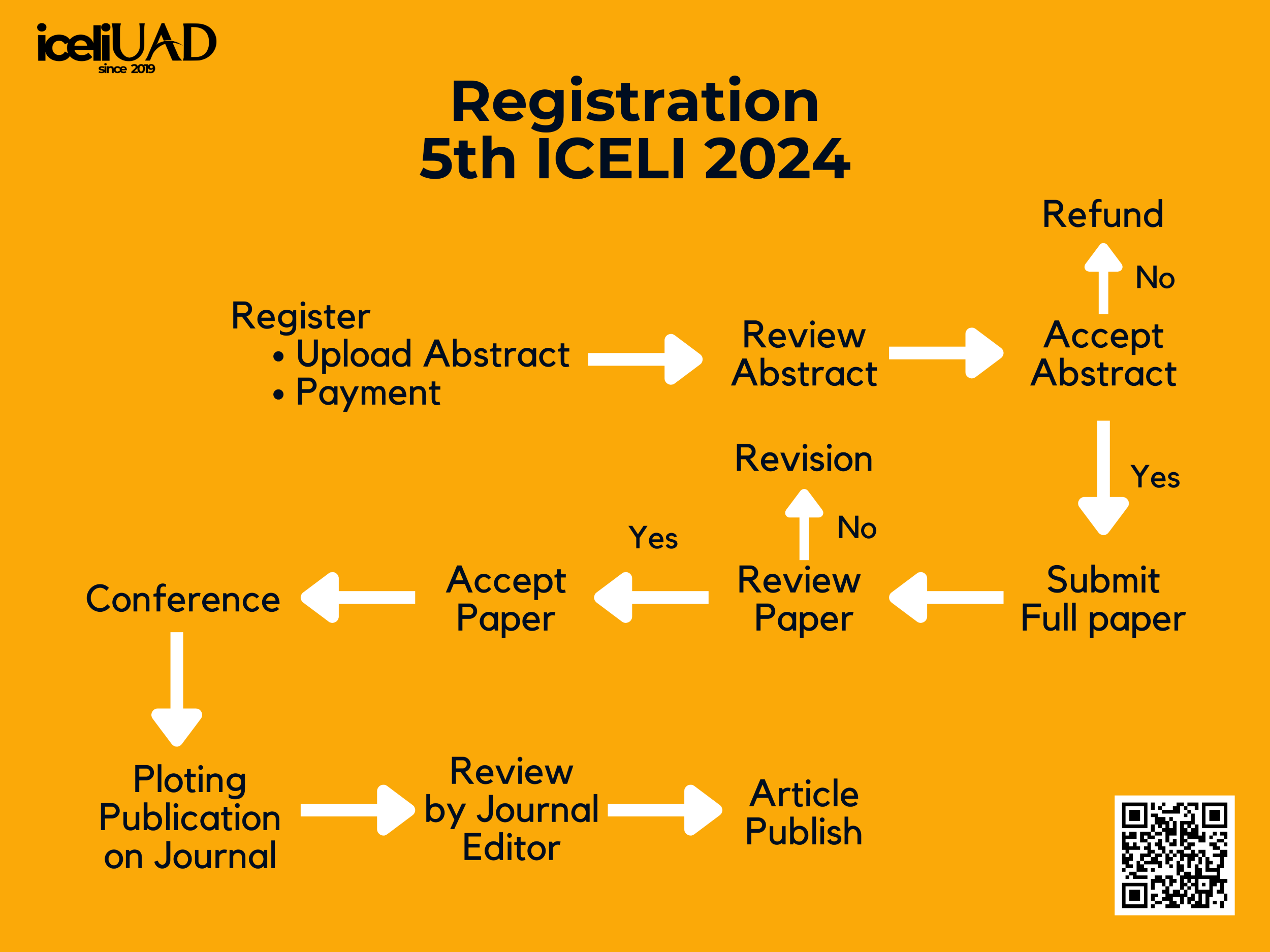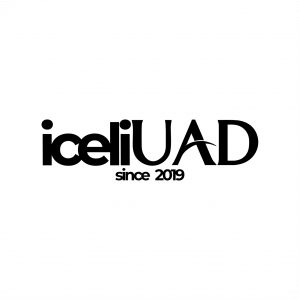- abstract (150-250 words, including keywords),
- extended abstract (1500-2000 words) and
- full paper (5000-8000 words, including figures, tables, and references)
- Please submit your WhatsApp number when you register in our Open Journal System to make you more comfortable to be contacted.
- At least two peers will review all submissions to the conference for their topic, quality, validity, and contribution.
- Abstract/extended abstract acceptance or rejection notified within 3 (three) days of submission.
- The full paper review process is conducted on August 20, 2025.
- Full paper submission is required if the author wants his/her paper to be selected for submission to the partner journal.
- The authors must ensure that their submission is free from plagiarism.
- The authors should follow the given guidelines when submitting the paper.
Manuscript Template ICELI 2025 HERE
Submission Publication
All accepted papers will be published in proceeding
Selected papers will have the opportunity to be published in:
- International Journal of Educational Management and Innovation (IJEMI) – Sinta 2
- Tadbir : Jurnal Studi Manajemen Pendidikan – Sinta 2
- Journal of Education and Teaching (JET) – Sinta 2
- Jurnal Fundamental Pendidikan Dasar (Fundadikdas) – Sinta 3
- Jurnal Inovasi dan Manajemen Pendidikan (JIMP) – Sinta 5
*) Confirmation
- All accepted papers will go through a double-blind peer review process and be published in our partner journal, which is available online.
- Selected papers will be submitted to the following journals and should follow the internal review process of each journal.
- The faster the author submits her/his paper, the greater the opportunity for the article to be reviewed by the journal’s reviewers.
Paper submission guidelines
- Article files should be provided in Microsoft Word format.
- An original article would generally consist of 5000-8000 words (including figures, tables, and references).
- All articles must be written in English. If English is not your first language, please ask an English-speaking colleague or other parties to proofread your article.
- Submissions may be formatted in single or double spacing. All accepted articles will be correctly formatted for publication.
- The text of the article should include the following:
- Title: as short as possible, with no abbreviations or acronyms.
- Abstract: approximately 150 words, a maximum of 250 words, including keywords. Consists of:
- Purpose
- Design/methodology/approach
- Findings
- Originality
- Research limitations/implications
- Contributions
- Text
- References and notes
- Tables and/or figures and their captions
- but not the names of authors, their biographical notes, nor any acknowledgments.
- Please make sure that the authors’ names are not included in the document/file properties.
- Please use the Harvard (name and date) reference system for citations in the text with a detailed alphabetical list at the end of the article. For example, “Hamel (2000) suggests …” or “Nonaka and Takeuchi (1995) found that …” or “A study of economic change (Nelson and Winter, 1982) has shown that …”
- It is imperative to ensure that all works cited in the text are included in the References section.
- References should be made only to works that are published, accepted for publication (not merely “submitted”), or available through libraries or institutions. Any other source should be qualified by a note regarding availability.
- Full reference should include all authors’ names and initials, date of publication, the title of the article, the title of the publication (italics), volume and issue number (of a journal), publisher and form (books, conference proceedings), and page numbers.
Double-check your manuscript
- It is your responsibility to check that the manuscript is complete, grammatically correct, and without spelling or typographical errors. A few other important points:
- Give the conference theme and track information for a final read. Is your manuscript a good fit? If it isn’t, the editor may decline it without peer review.
- Have you cleared any necessary publishing permissions?
- Have you followed all the formatting requirements laid out in the paper submission guidelines?
- Does the manuscript contain any information that might help the reviewer identify you? It could compromise the blind peer-review process. A few tips:
- If you need to refer to your work, use wording such as ‘previous research has demonstrated’ not ‘our previous research has demonstrated.’
- If you need to refer to your own, currently unpublished work, don’t include this work in the reference list.
- Carry out a final check to ensure that no author names appear anywhere in the manuscript. It includes figures or captions.
Step Upload Full Paper
ICELI manuscript acceptance flow:
- Abstract Submission (via registration form)
- Abstract review process (committee reviews abstracts)
- LoA is issued.
- Participants who receive the LoA abstract then send the full paper.
- The committee issues the full paper LoA
- Participants revise the manuscript according to the reviewer’s suggestion
- Participants send back the revised full paper
- Conference presentation
- The paper was submitted to ICELI’s proceedings or journal partner.


